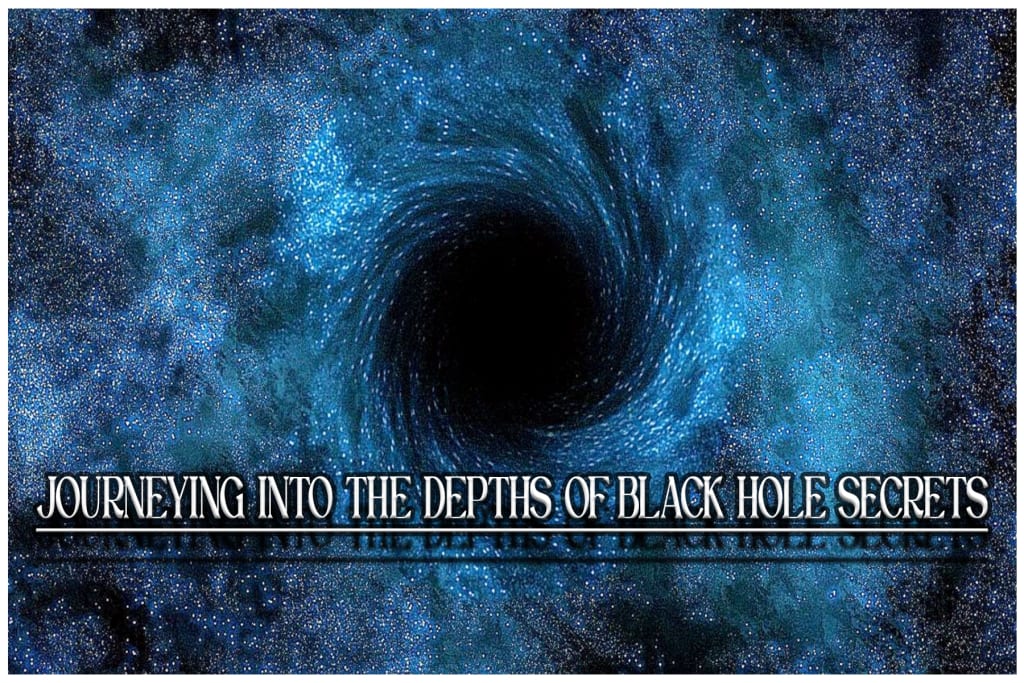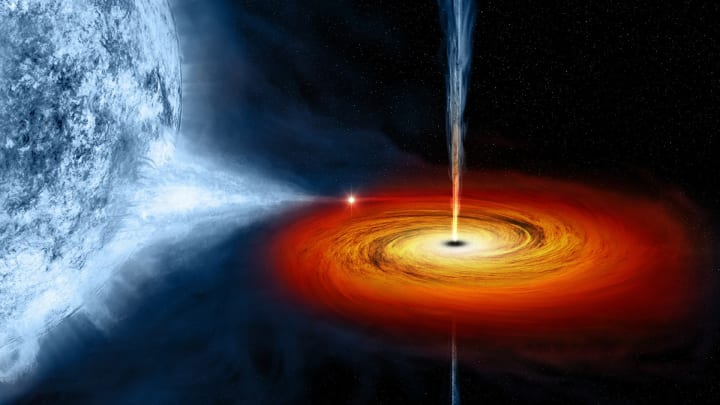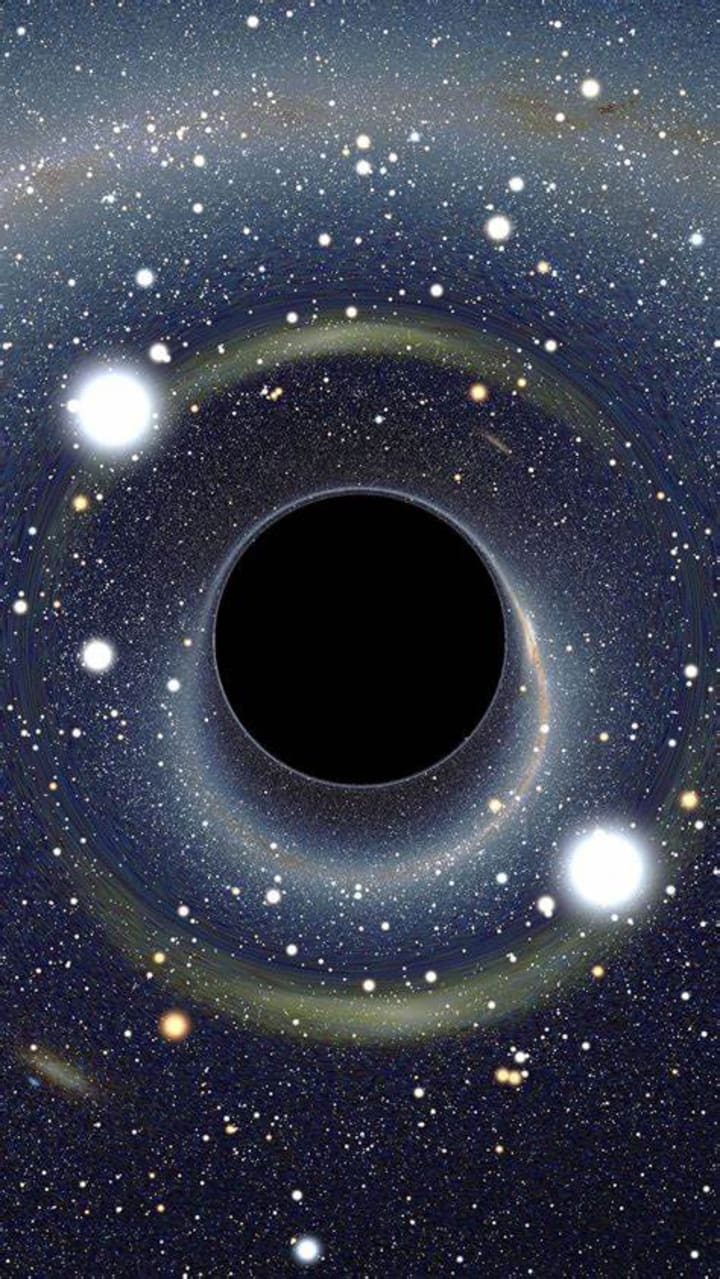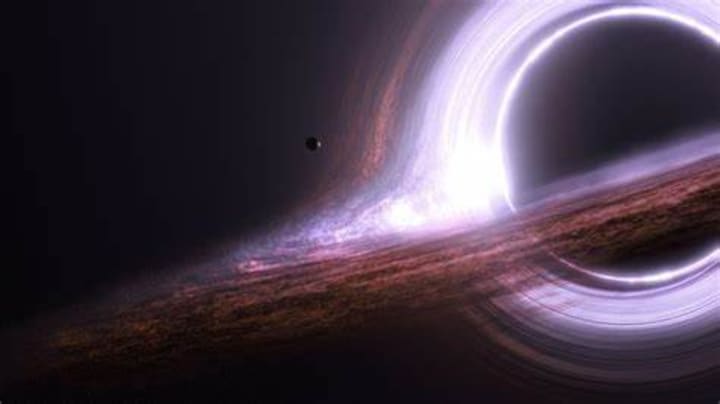"Black Holes: Cosmic Giants and Their Secrets"
“Journeying into the Depths of Black Hole Secrets”

In the vast theater of the cosmos, amidst all its powerful and enigmatic phenomena, black holes stand out as some of the most captivating actors. Recent years have seen astronomers peering deeper into their mysteries, unveiling a tapestry of diversity. These cosmic behemoths, once thought to be stationary sentinels of the universe, have revealed a surprising penchant for mobility. Some drift lazily through space, while others hurtle forward at mind-bending speeds, defying our expectations.
But what does this cosmic choreography entail for the universe around them? We're only beginning to grasp the answers. When stars, those celestial titans more than three times the mass of our own sun, meet their cosmic curtain call, they undergo a spectacular finale. The relentless grip of gravity seizes hold, triggering a gravitational collapse of epic proportions. In this cosmic swansong, matter is crushed into a singularity, a point where the very laws of physics buckle under the weight of gravity's tyranny. Behold, the birth of a black hole.
In this cosmic ballet, the consequences ripple far beyond the confines of the collapsing star. Like a whirlpool in the cosmic ocean, the gravitational waves emitted by these cosmic juggernauts distort the fabric of space-time itself, leaving an indelible mark on the surrounding regions. Material caught in their gravitational grasp spirals inexorably toward the event horizon, the point of no return, where even light itself bows before the black hole's might.
Yet, amidst the darkness, there is light. As astronomers train their instruments on these cosmic wonders, each observation unveils a new layer of understanding, shedding light on the intricate dance of matter and gravity on the cosmic stage. With every discovery, we edge closer to unraveling the enigma of these cosmic leviathans, unlocking the secrets they hold within their gravitational embrace. And as we peer deeper into the abyss, we are reminded that in the vast expanse of the cosmos, even the darkest corners hold the promise of illumination.

Black holes are like the cosmic vacuum cleaners of the universe, sucking in everything that dares to venture too close. Their gravitational grip is so intense that not even light, the speedster of the universe, can escape their clutches once it crosses the ominous threshold known as the event horizon. It's like a celestial tug-of-war, and light, despite its cosmic agility, just can't win against the black hole's gravitational brawn.
Now, let's play a cosmic game of shrink-ray with our beloved Sun. If we squashed it down into a black hole, it would be no bigger than a measly four miles across, but don't be fooled by its tiny stature. It would still pack the same gravitational punch as our familiar sun. Luckily for us, the planets of our solar system would keep on twirling around, business as usual, unaffected by the sun's sudden transformation into a cosmic pinprick.
But wait, there's more! Black holes aren't just brooding loners in the cosmic abyss; they're cosmic socialites, mingling with other celestial objects beyond their ominous event horizons. Thanks to some cosmic sleuthing by astronomers armed with fancy tech, we now know that black holes are as common as stardust, lurking in the heart of every galaxy like hidden guardians of the cosmos.
Even though black holes themselves are shy creatures, shrouded in darkness, they leave cosmic calling cards for us to find. These telltale signs come in the form of swirling disks of matter, hinting at the massive gravitational beast lurking within. Sometimes, these cosmic behemoths throw cosmic temper tantrums, spewing out material in spectacular fashion, like celestial fireworks in the cosmic night.
And here's where things get really mind-bending: sometimes black holes engage in a celestial tango, colliding with one another in cosmic dances of destruction and creation. And then there's Stephen Hawking's twist in the cosmic plot, the enigmatic Hawking radiation, a cosmic whisper that even black holes can't keep all their secrets hidden forever. So, while black holes may cloak themselves in mystery, they're always leaving behind cosmic breadcrumbs for us curious explorers to follow.
Picture this: supermassive black holes, those cosmic giants reigning over the heart of galaxies, are not just sitting idly by; they're spinning like cosmic whirligigs. But here's the kicker: their spin rates are off the charts, pushing the boundaries of believability.
Enter NASA's Chandra X-ray Observatory, a space sentinel tuned to the subtle whispers of the cosmos. Armed with the sensitivity to detect X-rays over a hundred times more keenly than any other system, Chandra set its sights on a cosmic jackpot: five colossal quasars.
Now, quasars are like cosmic lighthouses, beacons of brilliance in the vast expanse of space. But these particular quasars reside at mind-boggling distances, a whopping 10 to 11 billion light-years away from our cozy corner of the universe. Such cosmic real estate makes peering into their secrets a Herculean task.

But fear not, intrepid astronomers have cosmic tricks up their sleeves. They harness the power of gravitational lensing, a cosmic magnifying glass courtesy of massive objects like galaxies bending the fabric of space-time. Voila! Suddenly, those distant quasars become crystal clear, as if the cosmos itself is handing us a sharper image.
And what do we find when we peer into the heart of these cosmic giants? Spin, and lots of it. These supermassive black holes are twirling at dizzying speeds, defying our expectations and rewriting the cosmic rulebook. So, while the universe may throw us curveballs from billions of light-years away, our cosmic sleuthing knows no bounds.
Picture this cosmic spectacle: Einstein's predictions coming to life as light bends and twists, creating a mesmerizing dance of multiple images of the same object. One such celestial gem is the Einstein cross, where four mirror-like images of a distant quasar gleam in a symphony of cosmic geometry. But what's truly mind-bending is the cosmic choreography behind the scenes.
Enter gravitational lensing, Einstein's cosmic kaleidoscope, where massive objects like galaxies warp space-time, painting the cosmos with multiple reflections of distant stars and galaxies. And just when you think the cosmic show couldn't get any more dazzling, along comes micro-lensing, a cosmic magnifying glass courtesy of stars themselves, fine-tuning the cosmic spectacle to perfection.
Now, let's zoom into the heart of the cosmic drama, where supermassive black holes reign supreme. Astronomers, armed with their cosmic observatories, peered into the depths of these cosmic behemoths, expecting to find the usual suspects: accretion discs glowing with the fury of cosmic firestorms. But what they discovered left them breathless.
These cosmic whirlpools were not content with mere stillness; they were spinning at breakneck speeds, twirling their accretion discs closer to the brink of the event horizon than ever imagined. Picture this: discs of cosmic material orbiting at a dizzying 70% of the speed of light, with the black holes themselves whirling even faster in their cosmic ballet.
How did they reach such cosmic velocities? It's a tale as old as the universe itself. Material, drawn inexorably toward the black hole, adds its momentum to the swirling cosmic maelstrom, each particle adding to the cosmic spin over billions of years. The result? A cosmic vortex of unparalleled proportions, where even the fabric of space-time itself dances to the tune of cosmic gravity.
For instance, take the Einstein cross, measured to spin at a mind-bending 670 million miles per hour, a testament to the cosmic forces at play in the heart of galaxies. So, while we marvel at the cosmic spectacle unfolding before our eyes, let's remember that even in the depths of space, Einstein's predictions hold true, weaving a tapestry of cosmic wonder that continues to astound and inspire.
Not only do spinning black holes shake up the swirling disks of material around them, but they also leave their mark on the very fabric of space-time itself. These cosmic ripples, like echoes from a cosmic drumbeat, spread out into the vast expanse of their host galaxies, distorting the cosmic canvas in ways we're only beginning to grasp.
At present, detecting the full extent of these ripples remains a cosmic puzzle, but given the sheer mass and velocity involved, their effects likely reverberate throughout the entire galaxy. It's like a cosmic symphony, with black holes playing the role of conductors, orchestrating the dance of space-time itself.
As our cosmic quest for knowledge continues, future probes and research endeavors are already in the pipeline, poised to delve deeper into these cosmic mysteries. Who knows what cosmic revelations await us? With each discovery, our understanding of the universe deepens, painting a richer tapestry of cosmic wonder.
So, thank you for joining us on this cosmic journey. Until next time, keep your eyes on the stars, for the universe always has more secrets waiting to be unveiled.

About the Creator
Wali Ahmed Khan
I'm uncovering untold stories or shedding light on pressing issues. I remain dedicated to my craft, driven by a passion for storytelling and a commitment to excellence.
Enjoyed the story? Support the Creator.
Subscribe for free to receive all their stories in your feed. You could also pledge your support or give them a one-off tip, letting them know you appreciate their work.






Comments (1)
Nice!!